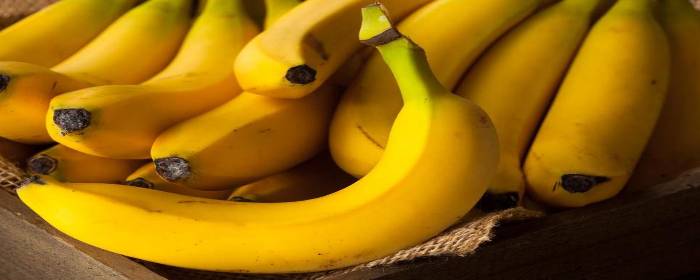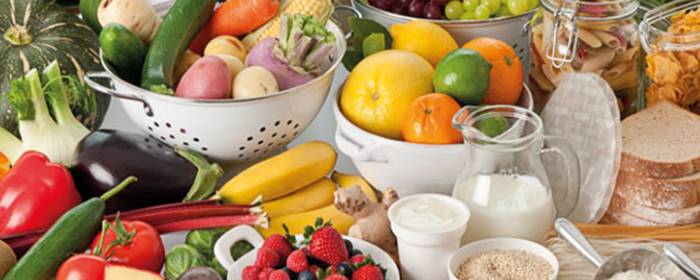
by admin | May 26, 2023 | Health Awareness, Chronic Pain
Many health conditions and lifestyle factors lead to ongoing inflammation within the body. When you have widespread inflammation, it can lead to chronic pain, aches, and other health concerns.
If you want to lower inflammation and feel better overall, you may benefit from an anti-inflammatory diet. Learn more about the anti-inflammatory diet and what it includes below.
The Anti-Inflammatory Diet
While certain foods can trigger inflammation, others can reduce it. The anti-inflammatory diet limits inflammatory triggers and focuses primarily on foods that can lower inflammation.
Foods that Trigger Inflammation
Anti-inflammatory diets limit the following foods that are considered inflammation triggers:
- Red meat
- Processed foods
- Sugar
- Fried foods
- White bread
- Cookies, candy, and ice cream
- High sodium foods
- Alcohol
When these foods are highly restricted or altogether eliminated, it can lead to lower inflammation levels throughout the body.
Foods that Reduce Inflammation
While the anti-inflammatory diet restricts foods that are triggered, it calls for an increase in foods that can reduce inflammation. These foods include:
- Oily fish (tuna, salmon)
- Berries
- Green leafy vegetables
- Nuts and seeds
- Beans
- Olive oil
- Probiotics
- Tea
These anti-inflammatory foods are high in antioxidants and other properties that can decrease inflammation. When your diet consists mostly of these foods, you can see a significant reduction in widespread inflammation, which may lead to a resolution of chronic pain and other symptoms.
Starting an Anti-Inflammatory Diet
If you struggle with chronic inflammation and want to try the anti-inflammatory diet, always speak with your medical team beforehand. Making major dietary changes is very impactful and should be discussed with your doctor in advance.
It is important to make sure that the anti-inflammatory diet is a healthy fit for any underlying conditions you already have. It is also important to ensure you are healthy enough to make a major dietary change.

by admin | Nov 11, 2019 | Health Awareness
If you’ve been looking for ways to reduce your calorie intake and lose weight, you may have come across the term “intermittent fasting,” or IF. While it may seem like just another fad diet, many experts agree that this eating pattern may actually hold up to its claims. Not only is IF safe and effective, but it could also play an important role in diabetes prevention. The catch is that it’s all in how you approach IF – discover some important tips below.
A Beginner’s Guide to Intermittent Fasting
What Is Intermittent Fasting?
Intermittent fasting isn’t an entirely new concept, but it was only recently popularized after a number of documentaries and books hailing the practice emerged from 2012 to 2016. The concept is simple: IF encourages eating only during a limited window of time, then fasting during the “off” hours.
In between meals, our body breaks down food and uses it as energy. When we don’t use all of this energy, however, it enters the cells, where it gets stored as fat. Yet, for sugar to enter the cells, insulin must be present. When we give our bodies a break from eating, insulin levels drop, and fat cells release built-up sugar to be used as energy. As a result, fasting encourages insulin levels to go down, thereby promoting weight loss.
What’s the Best Way to Approach It?
As with many well-known diets, there are different approaches to IF. Some advocates for the diet recommend fasting every other day, but many individuals find this approach too restrictive. Luckily, there are other, more sustainable approaches to try.
Most IF plans fall into an eight- or 12-hour window. In the first, you’d be able to eat within an eight-hour time frame, then fast for the other 16 hours of the day. In the second, you’d have 12 hours to eat and 12 to fast. Research suggests the more restrictive window may have a greater payoff: according to a 2018 study conducted by the University of Alabama, men with prediabetes who practiced “early time-restricted feeding” by having all of their meals between 7 am and 3 pm had drastically lower insulin levels than their peers who followed the 12-hour method, eating between 7 am and 7 pm. Their appetites had also reduced significantly.
Of course, IF is unlikely to yield any noticeable benefits if you fill your eight- or 12-hour eating period with high-calorie, nutritionally-poor food choices. Yet, if you’re following a sensible diet prioritizing vegetables and fruits, whole grains, healthy fats, and lean protein, you may notice some improvement by restricting your “eating window.”
As with any diet, IF is also only as effective as your ability to stick with it. If you’re interested in trying it, you might start with a manageable 12-hour window, such as 10 am to 6 pm. Or, simply adopt some of the principles from intermittent fasting if fasting seems too restrictive to you: avoid snacking between meals by taking in enough nutrient-dense calories during your meals and try not to eat after dinner. And, as with any diet, be sure to get the okay from your physician before starting IF.
Contact us today if you would like to learn more about IF!

by admin | Jan 31, 2019 | Health Awareness
Potassium is a mineral which plays many important roles in the body. It supports both cellular and electrical function, and is one of the blood minerals called an electrolyte, meaning that it carries a small electrical charge. The body uses this electricity to manage processes such as fluid balance, muscle contractions, and nerve signals. Thus, when your body has too much or too little potassium, it can alter many critical functions.
According to research, a potassium-rich diet can reduce blood pressure
and water retention. It may also prevent stroke, osteoporosis, and
kidney stones. In addition to keeping these conditions at bay, having optimal
potassium levels also supports your overall wellbeing. When potassium levels
dip too low, a condition called hypokalemia
can set in. It’s characterized by muscular cramping or weakness, depression,
insomnia, and cardiovascular complications, including abnormal heart rhythm.
With that said, it’s also possible to get too much potassium, which is why most
medical experts agree that getting the mineral through diet is the safest way
to maintain optimal levels.
Unless you have a known kidney disorder or another condition
which would cause you to limit your potassium consumption, you can aim for up
to 4,700
milligrams per day of the mineral. Below, we’ve compiled a list of
potassium-rich foods to start incorporating into your diet.
7 Foods High in Potassium
Beet Greens: When cooked, a 100-gram serving of beet greens has over 900 mg of potassium! When they’re in season (June through October), try sautéed beets with a little garlic and olive oil.
White Potatoes: Oftentimes, starchy foods like white potatoes get a bad reputation. In reality, white potatoes are high in nutrients, and 3.5 ounces of baked white potatoes contain 544 mg of potassium.
Pinto Beans: Versatile pinto beans can be added to chili, served as a side dish, or incorporated into salads and burritos. And, with nearly 650 mg, they pack a powerful punch of potassium.
Greens: There’s a reason kale is hailed as a superfood. As one of the most nutrient-dense but low-calorie foods on the planet, it is an excellent source of vitamins C and K, antioxidants, and has nearly 450 mg of potassium. Spinach, too, is a strong contender, and a 100-gram serving has 466 mg of the mineral when cooked.
Salmon: Fish like wild salmon and halibut are loaded with potassium, and most will satisfy upwards of 10% of your daily recommended intake. They’re also rich in vitamin D and omega-3 fatty acids.
Avocado: Another superfood, avocados are packed with fiber, heart-healthy fatty acids, and potassium. A single serving meets 14% of your daily recommended value for potassium, too.
Bananas: The yellow fruit has rightfully earned its longstanding reputation as a potassium-rich food. Yet, with roughly 350 mg per serving, all of the other foods on this list actually contain more potassium than bananas!

by admin | Oct 1, 2018 | Health Awareness
Certain types of food are commonly known to trigger inflammation in people who are sensitive to specific agents. To manage diseases such as irritable bowel syndrome, Crohn’s disease, and other chronic inflammatory disorders, many people have turned to the low-FODMAP diet.
What Does FODMAP Mean?
FODMAP is an acronym for fermentable oligo-, di-, monosaccharides and polyols. In short, they are dietary sugars found in many grains, types of produce, and dairy products. While these FODMAPs sound complex, they simply refer to characteristics in foods that are known to present digestion challenges. These agents are highly fermentable, and it is their rapid fermentation that leads to bowel issues. For instance, they create an osmotic effect, meaning they draw water through the bowel, creating increased permeability. They are also poorly absorbed within the small intestine, and the fermentation that takes place within can create gas, abdominal pain, discomfort, diarrhea, and constipation.
Which Foods are Considered High-FODMAP?
There are many foods high in FODMAPs. Foods with excess fructose, including honey, dried fruit, watermelon, pears, and apples, should be avoided on the diet. Sources of lactose, including milk, yogurt, and dairy desserts, are also high-FODMAP. Leeks, onions, barley, rye, wheat, garlic, legumes, cashews, and chickpeas are best avoided on the diet as well. This list is by no means exhaustive, however, and there are many other foods considered to be high enough in FODMAPs to cause an inflammatory response. With that said, certain food sources don’t have to be avoided entirely on the diet and limiting portion sizes may be enough to minimize inflammatory effects.
Is the Low-FODMAP Diet Right for Me?
Because many high-FODMAP foods are also rich sources of key nutrients, it is typically not recommended for anyone who doesn’t have an apparent sensitivity to FODMAPs to try the diet. Avoidance of FODMAPs could put individuals at risk of nutritional deficiencies, as it restricts many healthy foods. Thus, it should only be followed as prescribed by healthcare professionals.
In fact, this restrictive diet is only practiced for three to eight weeks at a time. It is typically followed in phases. The first phase involves strict elimination of FODMAPs, followed by a reintroduction stage during which one type of FODMAP is introduced at a time. This allows patients to gauge which group triggers the most significant inflammatory response. Then, in the final phase, the modified FODMAP diet can be followed, in which certain trigger foods can be avoided at the patient’s discretion.
While a low FODMAP diet is not intended to be a permanent solution, it can shed light on which dietary sources elicit the most challenging symptoms in disorders like IBS and Crohn’s disease. If you’re interested in exploring the eating plan to help you manage your condition, be sure to speak with your gastroenterologist to discuss your eligibility for the diet.





 St. Petersburg, Florida
St. Petersburg, Florida
